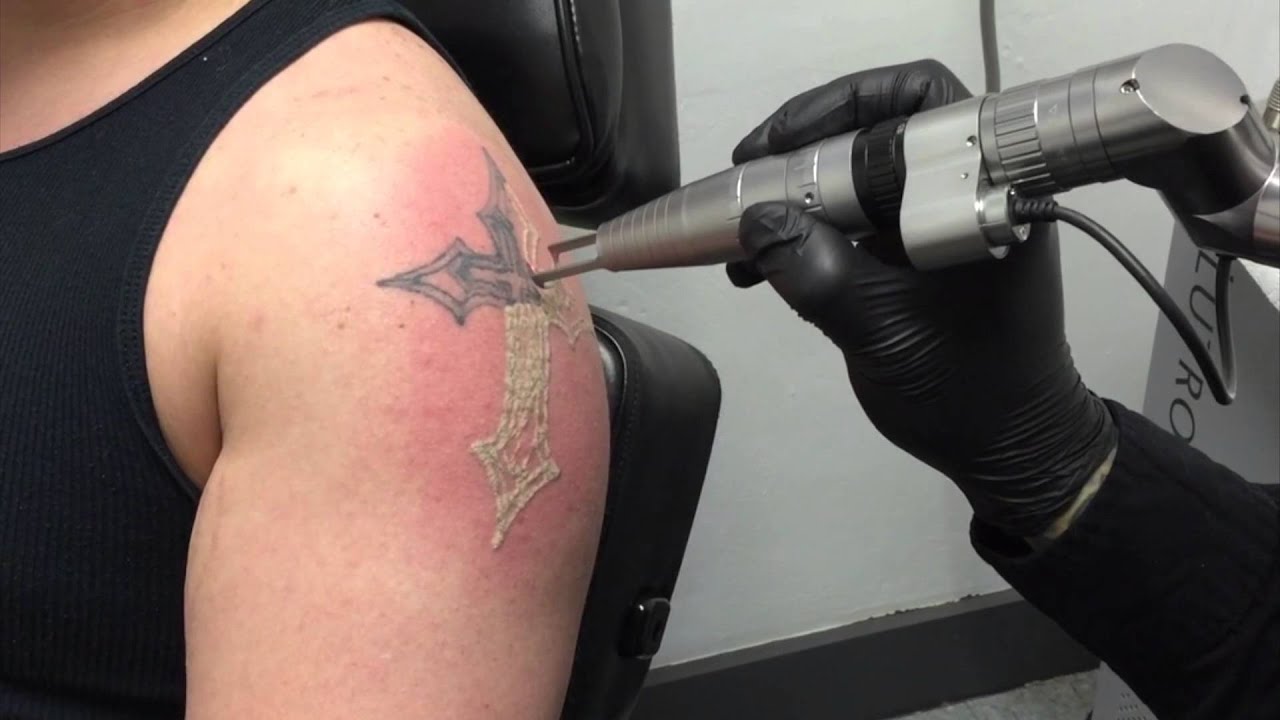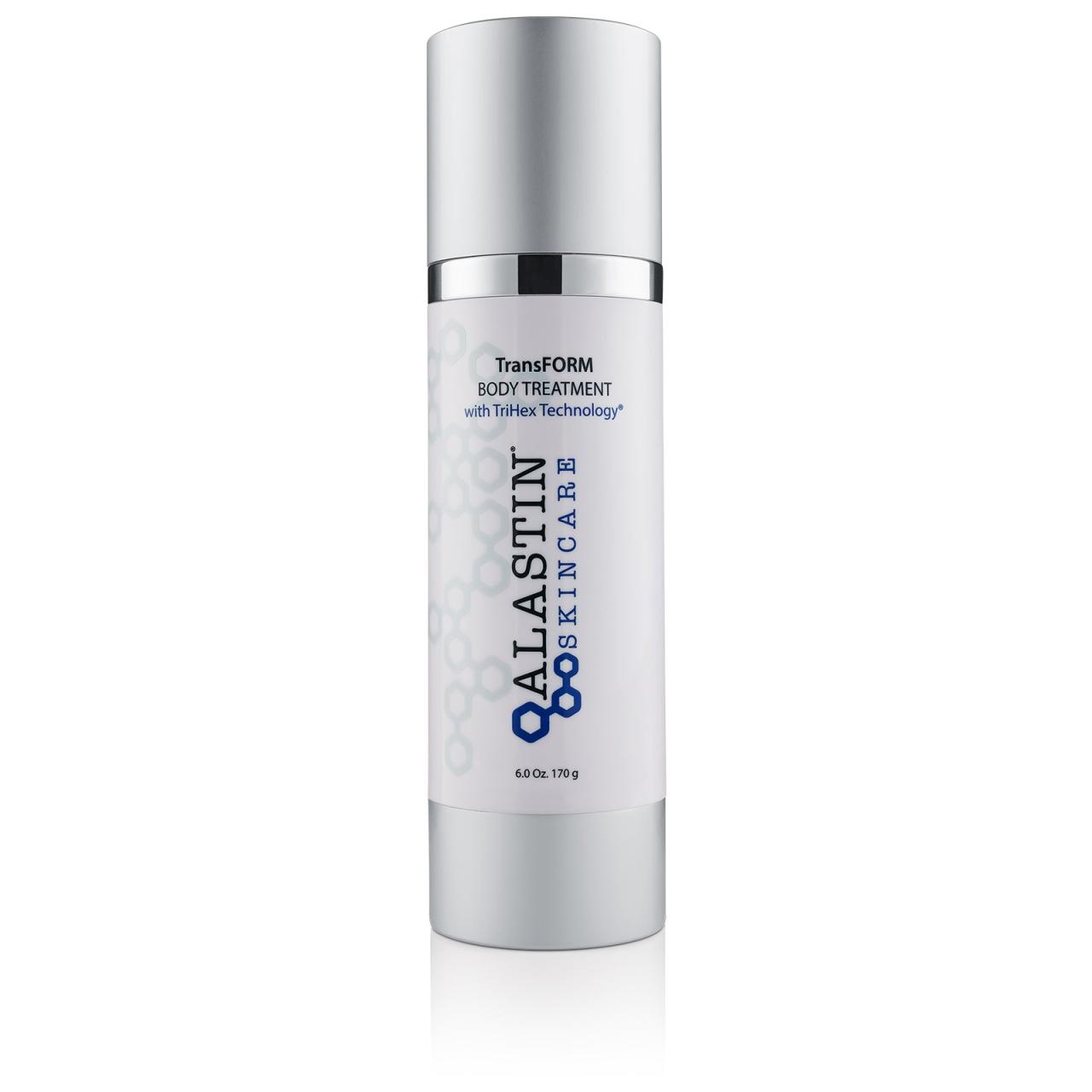Latest Tattoo Removal Technology: A Comprehensive Guide
Latest tattoo removal technology has revolutionized the way we approach unwanted ink, offering more precise, efficient, and comfortable solutions than ever before. Gone are the days of painful and lengthy […]

Latest tattoo removal technology has revolutionized the way we approach unwanted ink, offering more precise, efficient, and comfortable solutions than ever before. Gone are the days of painful and lengthy procedures, as advancements in lasers and other technologies have paved the way for faster healing and more natural-looking results.
This guide delves into the latest advancements in tattoo removal, exploring various techniques, their effectiveness, safety considerations, and the future of this evolving field. We’ll discuss the science behind these technologies, compare their pros and cons, and provide insights into making informed decisions about your tattoo removal journey.
Introduction to Tattoo Removal Technology
Tattoos, a form of body art that has been around for centuries, have become increasingly popular in recent times. However, for some individuals, the desire to remove their tattoos can arise due to various reasons, such as changing aesthetics, regret, or professional considerations. Tattoo removal technology has evolved significantly over the years, offering individuals a range of options to erase unwanted ink.
The history of tattoo removal methods dates back to ancient civilizations, where various techniques were employed to fade or eliminate tattoos. Early methods involved abrasive techniques like sanding or scraping the skin, which were often painful and resulted in scarring. Chemical treatments, such as the application of acids or caustic substances, were also used, but these methods carried significant risks of skin damage and infection.
Evolution of Tattoo Removal Technology
The evolution of tattoo removal technology has been driven by advancements in medical science and laser technology. Early laser-based methods, introduced in the 1980s, utilized Q-switched lasers that targeted the ink pigments, breaking them down into smaller particles that could be absorbed by the body. These early lasers were often less effective on certain ink colors and could cause scarring or pigmentation changes.
Modern advancements in laser technology have led to the development of more sophisticated lasers that are more precise and effective in removing a wider range of ink colors. These lasers, such as the PicoSure laser, utilize ultra-short pulses of energy to break down the ink particles with minimal collateral damage to the surrounding skin.
Commonly Used Tattoo Removal Techniques
There are several commonly used tattoo removal techniques, each with its own advantages and disadvantages.
- Laser Tattoo Removal: This is the most widely used and effective method for removing tattoos. Laser tattoo removal utilizes focused beams of light to target and break down the ink particles. The specific type of laser used depends on the color of the ink and the depth of the tattoo. Laser tattoo removal is generally considered the gold standard for tattoo removal due to its precision and effectiveness.
- Surgical Excision: This technique involves surgically removing the tattooed skin. Surgical excision is typically used for small tattoos or those located in areas where laser treatment is not feasible. It is a more invasive procedure than laser removal and can leave scars.
- Dermabrasion: This technique involves using a rotating abrasive instrument to remove the top layer of skin, including the tattooed area. Dermabrasion is a more aggressive technique that can be painful and can cause scarring. It is rarely used for tattoo removal today.
- Salabrasion: This technique involves using a salt solution to abrade the tattooed skin. Salabrasion is a less invasive technique than dermabrasion, but it can still cause scarring.
Latest Tattoo Removal Technologies
Tattoo removal has evolved significantly, with new technologies offering more effective, safer, and less painful options compared to traditional methods. This section will delve into the latest advancements in tattoo removal technology, exploring their mechanisms, effectiveness, safety, and potential side effects.
Picosecond Laser Technology
Picosecond lasers have emerged as a game-changer in tattoo removal. These lasers deliver ultra-short pulses of energy, measured in trillionths of a second, to the tattoo ink. The intense energy breaks down the ink particles into smaller fragments that are more easily absorbed by the body’s immune system.
The short pulse duration of picosecond lasers minimizes the risk of heat damage to surrounding skin, making them a safer option for removing tattoos on delicate areas like the face or neck. Additionally, picosecond lasers are particularly effective in removing stubborn ink colors, such as black, blue, and green, that were previously challenging to remove.
Q-Switched Lasers
Q-switched lasers have been a mainstay in tattoo removal for several years. They deliver high-energy pulses of light to the tattoo, targeting the ink particles and causing them to fragment. This fragmentation process makes the ink easier for the body to break down and eliminate.
Q-switched lasers are effective in removing a wide range of ink colors, but they can be more painful than picosecond lasers. They also carry a higher risk of scarring, especially for darker skin tones.
Other Emerging Technologies
While picosecond and Q-switched lasers are the most widely used technologies for tattoo removal, other emerging technologies are showing promise. These include:
- Intense Pulsed Light (IPL): IPL devices emit broad-spectrum light that targets a range of skin conditions, including tattoos. While IPL is not as effective as lasers for tattoo removal, it can be used to fade lighter tattoos and remove superficial ink.
- Fractional Laser Resurfacing: This technology uses a laser to create tiny, evenly spaced holes in the skin, stimulating collagen production and promoting skin rejuvenation. Fractional laser resurfacing can be used to remove tattoos, but it is typically reserved for smaller tattoos or for treating areas with significant scarring.
- Microneedling: This technique involves using a device with tiny needles to create micro-injuries in the skin. Microneedling can be used to remove tattoos by promoting the body’s natural healing process, which helps to break down and remove the ink.
Laser Tattoo Removal: Latest Tattoo Removal Technology
Laser tattoo removal is a widely used and effective method for removing unwanted tattoos. It works by targeting the tattoo ink with a focused beam of light energy. The laser light is absorbed by the ink particles, causing them to break down into smaller fragments that are then removed by the body’s immune system.
Types of Lasers Used for Tattoo Removal
Different types of lasers are used for tattoo removal, each with its own specific wavelength and characteristics that make them suitable for targeting different ink colors.
- Q-switched Nd:YAG laser: This laser emits a high-energy pulse of light that is absorbed by black and dark blue inks. It is effective for removing a wide range of tattoo colors, including black, blue, green, and red.
- Q-switched ruby laser: This laser is specifically effective for removing red and orange inks. It emits a shorter wavelength of light than the Nd:YAG laser, making it more suitable for targeting these lighter colors.
- Q-switched alexandrite laser: This laser is effective for removing a wide range of tattoo colors, including black, blue, green, and red. It is also used for treating pigmented lesions, such as freckles and age spots.
- Picosecond lasers: These lasers deliver ultra-short pulses of light that are even more precise than Q-switched lasers. They are particularly effective for removing newer tattoos, which have smaller ink particles.
Process of Laser Tattoo Removal
The process of laser tattoo removal typically involves multiple treatment sessions spaced several weeks apart. During each session, the laser is applied to the tattoo in a series of pulses. The laser light breaks down the ink particles, causing them to be absorbed by the body’s immune system.
The number of sessions required for complete tattoo removal varies depending on factors such as the size, color, and age of the tattoo, as well as the individual’s skin type and healing process.
The treatment area may feel a slight stinging or burning sensation during the laser pulses, but this discomfort is usually minimal and short-lived. A topical anesthetic cream can be applied to the skin before the treatment to minimize discomfort.
Advantages and Disadvantages of Laser Tattoo Removal
Laser tattoo removal offers several advantages, including:
- Effectiveness: Laser tattoo removal is generally considered a very effective method for removing unwanted tattoos, especially those with darker colors.
- Precision: Lasers can be precisely targeted to the tattoo ink, minimizing damage to the surrounding skin.
- Minimal scarring: When performed by a qualified professional, laser tattoo removal usually results in minimal scarring.
However, there are also some disadvantages to consider:
- Multiple sessions: Laser tattoo removal typically requires multiple treatment sessions, which can be time-consuming and expensive.
- Discomfort: While the discomfort is usually minimal, some people may experience stinging or burning during the laser pulses.
- Effectiveness varies by ink color: Laser tattoo removal is less effective for removing lighter colors, such as yellow and white.
- Skin type limitations: Laser tattoo removal is not suitable for everyone, particularly those with darker skin tones.
Picosecond Laser Technology
Picosecond laser technology is a newer, more advanced method of tattoo removal that has gained significant popularity in recent years. It utilizes ultra-short pulses of light, measured in trillionths of a second (picoseconds), to target and break down tattoo ink particles. This technology offers several advantages over traditional laser methods, making it a preferred choice for many individuals seeking tattoo removal.
Picosecond Laser Technology: Features and Mechanisms
Picosecond laser technology operates by delivering extremely short, high-intensity pulses of light energy to the targeted tattoo ink. These pulses are so short that they interact with the ink particles on a molecular level, causing them to shatter into smaller fragments. This process, known as photoacoustic disruption, effectively breaks down the ink without causing significant damage to the surrounding skin.
The key to picosecond laser technology lies in its ability to deliver energy in such short bursts that it minimizes heat transfer to the surrounding tissues, resulting in less pain, faster healing, and reduced risk of scarring.
Picosecond Laser Tattoo Removal Compared to Traditional Methods
Picosecond laser technology offers several advantages over traditional nanosecond laser tattoo removal methods:
- Faster Treatment Times: Due to the shorter pulse duration, picosecond lasers can break down ink particles more effectively, requiring fewer treatment sessions compared to traditional lasers.
- Reduced Pain and Discomfort: The shorter pulses generate less heat, leading to a more comfortable treatment experience with minimal pain.
- Improved Healing: The reduced heat and more precise targeting of ink particles contribute to faster healing times and a lower risk of scarring.
- Enhanced Effectiveness on Various Ink Colors: Picosecond lasers are particularly effective in removing stubborn ink colors, including black, blue, and green, which can be challenging to remove with traditional methods.
While picosecond laser technology offers significant advantages, it also has some potential limitations:
- Higher Cost: Picosecond lasers are more advanced and require specialized equipment, leading to higher treatment costs compared to traditional laser methods.
- Not Suitable for All Tattoo Types: While effective for a wide range of tattoos, picosecond lasers may not be suitable for all types, such as those with very deep ink or those located in sensitive areas.
- Limited Availability: Picosecond laser technology is relatively new, and not all clinics or dermatologists may have access to this advanced equipment.
Examples of Successful Tattoo Removal Outcomes
Numerous studies and anecdotal evidence demonstrate the effectiveness of picosecond laser technology in removing tattoos. For instance, a study published in the Journal of Cosmetic Dermatology found that picosecond laser treatment resulted in significant improvement in tattoo removal compared to traditional laser methods, with faster healing times and fewer side effects.
The technology has been particularly successful in removing tattoos with stubborn colors, such as black, blue, and green, which are notoriously difficult to remove with traditional lasers.
Another example is the case of a patient with a large, multi-colored tattoo that had been resistant to treatment with traditional lasers. After undergoing several picosecond laser treatments, the patient experienced significant fading of the tattoo, with minimal scarring and faster healing compared to previous attempts with traditional lasers.
Other Emerging Technologies
While laser technology has dominated the tattoo removal scene for decades, the field is witnessing the rise of new and innovative approaches. These emerging technologies offer potential advantages over traditional laser methods, paving the way for more effective, efficient, and personalized tattoo removal solutions.
Alternative Tattoo Removal Technologies
Beyond lasers, several other technologies are being explored for tattoo removal. These methods offer unique mechanisms for breaking down tattoo ink, potentially leading to faster healing and fewer side effects.
| Technology | Description | Advantages | Disadvantages |
|---|---|---|---|
| Intense Pulsed Light (IPL) | IPL devices emit a broad spectrum of light, targeting multiple wavelengths to break down ink pigments. | Effective for removing various ink colors, relatively painless, can treat multiple skin conditions. | May not be as effective as lasers for all ink types, requires multiple sessions. |
| Picosecond Laser Technology | Picosecond lasers deliver ultra-short pulses of energy, shattering ink particles into smaller fragments. | Faster treatment times, reduced risk of scarring, potential for better results with stubborn inks. | May be more expensive than traditional lasers, still requires multiple sessions. |
| Q-Switched Nd:YAG Laser | This laser uses a specific wavelength to target black and dark blue ink, breaking it down into smaller particles. | Effective for removing dark-colored tattoos, relatively painless, relatively affordable. | Limited effectiveness for other ink colors, may require multiple sessions. |
| Microdermabrasion | This technique uses a diamond-tipped instrument to exfoliate the top layers of skin, removing the tattoo ink along with the skin cells. | Relatively painless, affordable, can be used for superficial tattoos. | Limited effectiveness for deeper tattoos, may require multiple sessions. |
| Chemical Peels | Chemical peels use acids to remove the top layers of skin, along with the tattoo ink. | Effective for superficial tattoos, can improve skin texture. | May cause irritation and redness, not suitable for all skin types. |
| Dermabrasion | This technique uses a rotating brush to remove the top layers of skin, including the tattoo ink. | Effective for removing superficial tattoos, can improve skin texture. | May cause scarring, requires significant downtime, not suitable for all skin types. |
Potential of Emerging Technologies
The development of these alternative tattoo removal technologies holds significant promise for the future. The ability to target specific ink types more effectively, reduce treatment times, and minimize side effects could revolutionize the tattoo removal process. For example, research is ongoing to explore the use of photoacoustic technology, which uses sound waves to break down ink particles, potentially offering a more precise and less invasive approach. Additionally, advancements in nanotechnology are being investigated for targeted ink removal, potentially leading to even faster and more effective treatments.
Considerations for Choosing a Tattoo Removal Technology
Choosing the right tattoo removal technology is crucial for achieving your desired outcome and ensuring a safe and effective treatment. Several factors should be considered when making this decision.
Tattoo Characteristics
The size, color, and location of your tattoo can significantly impact the effectiveness and duration of the removal process.
- Size: Larger tattoos generally require more treatment sessions and may take longer to fade completely.
- Color: Darker colors, like black and blue, are typically easier to remove than lighter colors, such as yellow or green.
- Location: Tattoos located on areas with thinner skin, like the face or neck, may be more prone to scarring or pigmentation changes.
Skin Type and Health Conditions
Your skin type and any underlying health conditions can influence the suitability and effectiveness of different removal technologies.
- Skin Type: People with darker skin tones may experience more side effects, such as hyperpigmentation (darkening of the skin), with some tattoo removal methods.
- Health Conditions: Certain medical conditions, such as autoimmune disorders or keloid scarring, can increase the risk of complications during tattoo removal.
Cost and Availability of Treatments
The cost of tattoo removal can vary significantly depending on the technology used, the size and location of the tattoo, and the number of treatment sessions required.
- Cost: Laser tattoo removal is generally the most expensive option, while other methods, such as dermabrasion, may be more affordable.
- Availability: Some technologies, such as picosecond lasers, may not be available in all areas.
Desired Outcome and Expectations, Latest tattoo removal technology
It is essential to have realistic expectations about the outcome of tattoo removal.
- Complete Removal: While many technologies can effectively fade tattoos, complete removal is not always possible, especially for older or complex tattoos.
- Treatment Duration: Tattoo removal can be a lengthy process, requiring multiple sessions over several months or even years.
- Potential Side Effects: All tattoo removal technologies carry the risk of side effects, such as scarring, pigmentation changes, or infection.
Safety and Risks of Tattoo Removal
While tattoo removal offers a chance to erase unwanted ink, it’s crucial to understand the potential risks and side effects associated with these procedures. Like any medical intervention, tattoo removal carries inherent risks, and choosing a qualified practitioner is paramount to minimizing complications and maximizing safety.
Risks and Side Effects
Tattoo removal procedures can cause a range of side effects, some of which can be temporary, while others may be permanent. It’s essential to be aware of these potential risks and discuss them openly with your chosen practitioner.
- Skin Discoloration: Tattoo removal can lead to hyperpigmentation (darkening) or hypopigmentation (lightening) of the treated area. This is more common in individuals with darker skin tones.
- Scarring: While not always common, scarring is a potential risk, especially with older or deeper tattoos. The type of laser used, the skill of the practitioner, and the individual’s healing process can all influence scarring.
- Infection: As with any procedure that breaks the skin, there’s a risk of infection. Proper hygiene and aftercare instructions are crucial to minimize this risk.
- Pain and Discomfort: Tattoo removal can be painful, and the level of discomfort can vary depending on the individual’s pain tolerance, the size and depth of the tattoo, and the technology used.
- Blistering and Swelling: These are common side effects, especially after the initial treatment sessions. They usually subside within a few days.
Choosing a Qualified Practitioner
The most crucial step in ensuring the safety and effectiveness of tattoo removal is choosing a qualified and experienced practitioner.
- Certification and Experience: Look for a practitioner who is certified in laser tattoo removal by a reputable organization, such as the American Society for Laser Medicine and Surgery (ASLMS). Experience is also crucial; choose someone who has performed numerous tattoo removal procedures.
- Consultations: A thorough consultation is essential. The practitioner should assess your tattoo, skin type, and medical history, and discuss your expectations and any potential risks or side effects.
- Reputation: Research the practitioner’s reputation. Check online reviews, testimonials, and ask for referrals from friends or family who have undergone tattoo removal.
Minimizing Risks and Maximizing Safety
While risks cannot be entirely eliminated, there are steps you can take to minimize them and maximize your safety during tattoo removal.
- Follow Aftercare Instructions: Your practitioner will provide detailed aftercare instructions. Follow these carefully to promote healing and reduce the risk of infection or complications.
- Protect Your Skin: Avoid sun exposure on the treated area for several weeks after each treatment session. Use sunscreen with a high SPF to protect your skin from harmful UV rays.
- Realistic Expectations: Understand that tattoo removal is a process that takes time and multiple sessions. Be patient and realistic about the expected results.
Tattoo Removal Aftercare
Proper aftercare is crucial for tattoo removal, as it helps promote healing, minimize complications, and achieve the best possible results. Following your doctor’s instructions and maintaining a clean and protected treatment area are essential for optimal recovery.
Importance of Following Aftercare Instructions
Following your doctor’s aftercare instructions is crucial for optimal healing and minimizing complications. These instructions may vary depending on the specific technology used, the size and location of the tattoo, and your individual health. However, some common aftercare practices include:
- Keeping the treated area clean: Gently wash the area with mild soap and water and pat it dry. Avoid scrubbing or using harsh soaps.
- Applying a topical ointment: Your doctor may recommend an antibiotic ointment to prevent infection. Apply a thin layer as directed.
- Protecting the area from the sun: Sun exposure can increase the risk of scarring and hyperpigmentation. Use sunscreen with an SPF of 30 or higher on the treated area.
- Avoiding scratching or picking: Resist the urge to scratch or pick at the treated area, as this can increase the risk of infection and scarring.
- Wearing loose-fitting clothing: Avoid wearing tight clothing that can rub against the treated area.
Potential Signs of Infection or Other Complications
While tattoo removal is generally safe, it’s essential to be aware of potential complications. It’s important to contact your doctor immediately if you experience any of the following:
- Increased redness, swelling, or pain: These symptoms could indicate infection or inflammation.
- Pus or drainage: This is a clear sign of infection.
- Fever: Fever can also be a sign of infection.
- Blistering or crusting: While some crusting is normal, excessive blistering or crusting could indicate a problem.
- Changes in skin color: Discoloration, such as hyperpigmentation (darkening) or hypopigmentation (lightening), can occur.
- Scarring: While scarring is possible, following aftercare instructions can help minimize the risk.
Future Directions in Tattoo Removal

The field of tattoo removal is constantly evolving, with researchers and scientists actively exploring new and improved technologies to make the process more effective, safer, and accessible. The future of tattoo removal promises advancements that will address current limitations and offer patients a wider range of options.
Non-Invasive Tattoo Removal
The development of non-invasive tattoo removal methods is a major focus of current research. This approach aims to eliminate the need for lasers or other invasive procedures, reducing pain, downtime, and potential complications. Several promising non-invasive technologies are being investigated:
- Microneedling: This technique involves using tiny needles to create microscopic punctures in the skin, stimulating collagen production and potentially breaking down tattoo ink particles.
- Electroporation: This method uses electric pulses to temporarily create pores in the skin, allowing for the delivery of specialized solutions that can target and break down tattoo ink.
- Topical Creams: Researchers are developing topical creams that can penetrate the skin and target tattoo ink particles for removal. These creams may contain enzymes or other agents that can break down the ink.
More Effective Tattoo Removal
Current laser tattoo removal techniques are effective, but they can require multiple sessions and may not completely eliminate all traces of the tattoo. Researchers are working to improve the effectiveness of tattoo removal by:
- Targeting Specific Ink Colors: New lasers are being developed that can target specific ink colors more effectively, leading to faster and more complete removal. For example, some lasers are designed to target black ink, while others are optimized for colored inks.
- Improving Laser Pulse Duration: Researchers are exploring ways to modify the duration of laser pulses to optimize the breakdown of tattoo ink. Shorter pulses may be more effective for certain ink colors, while longer pulses may be better suited for other types of ink.
- Combining Technologies: Combining different tattoo removal technologies, such as lasers and microneedling, may enhance the effectiveness of treatment. This approach could potentially target different aspects of the tattoo and lead to faster and more complete removal.
Final Thoughts
As technology continues to evolve, the future of tattoo removal holds exciting possibilities for even more effective, painless, and personalized solutions. Whether you’re considering removing a faded tattoo or a large, intricate design, understanding the latest advancements empowers you to make informed choices and achieve your desired results. With careful consideration and consultation with a qualified practitioner, you can embark on your tattoo removal journey with confidence and achieve the skin you desire.
The latest tattoo removal technology utilizes lasers to break down ink particles, making them easier for the body to absorb. This technology is similar to the advancements in new braces technology , where lasers are used to precisely shape and mold the braces for a more comfortable fit.
Just as lasers can remove unwanted tattoos, they can also help create a more aesthetically pleasing smile.









